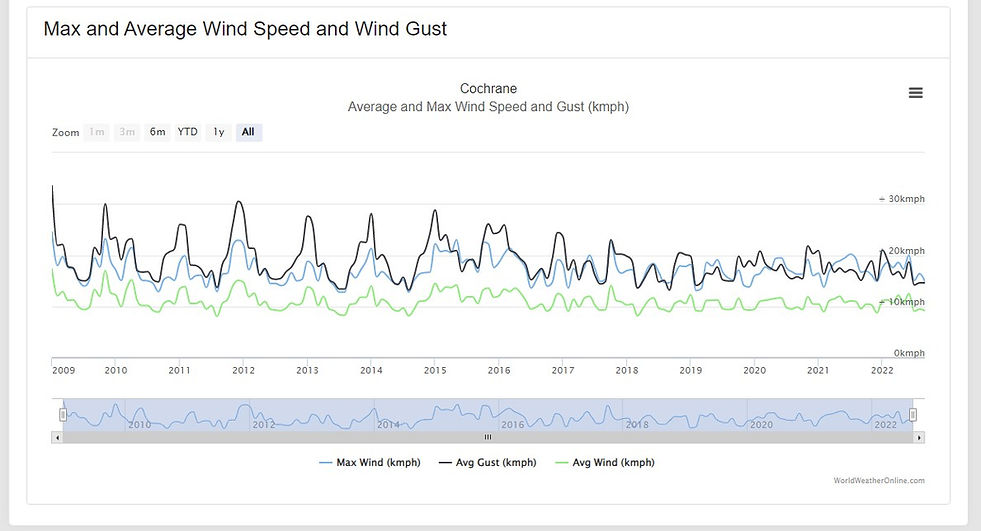MyCalbridgeExperience
The Vinyl Siding Debacle
or Please Don't Blow on the House!
At a Glance:
A single company did both our siding and our roofing. Before my wife and I took possession of the house we were less than impressed with the quality of the work provided by that company. A large area of our roof visible from the bedroom was not even shingled. The j-trim work was sloppy and, in some cases, literally falling off the house. There were large bulges in the siding. These were mentioned in the pre-occupancy inspection and some, not all, the work was addressed.
The day after we took possession of our house the roof over the garage started leaking. Imagine that! Not even 48 hours into our occupancy the roof is leaking! Roofing was found to be at fault. Calbridge patched that area of the roof.
A few days later roofers working on the (non-Calbridge) house under construction next to us knocked on our door and told me that a large section of the roof not visible from any window or the street did not have shingles on it. Again, Calbridge patched the roof.
During our inspections with the different Calbridge site supervisors I pointed out the bulges in the siding and how the starting rail in the siding seemed to not be attached properly. Nothing was done about it.
After just slightly more than two years of living in the house, some of our siding blew off. Again, Calbridge merely patched the siding. After the siding was patched I found out that multiple homes along our street had their siding blown off too. I was told by my neighbours that only homes build by Calbridge were affected.
I talked to siding contractors, every one of which stated my problem seems to be an application problem. I contacted the Siding Contractors Association of Alberta who, after I provided them with wind data in our area said, "Thanks for all the info. The information is quite complete! By looking at the windspeed graphs, it is pretty easy to see that there were no levels beyond the acceptable parameters that the siding is warranted to." All this information was passed along to Calbridge's Construction and Customer Care Manager (CW) and he replied, "There are several ways to complete almost every aspect of building a home which allows for variances from one contractor/company/home builder/ to another."
Calbridge refused to do any work on the siding despite our complaints from the time we moved in. CW asserted, "The rear of your home is West facing and very exposed due to the large open space behind your house, there is no protection acting as a 'wind break'. The homes on your section of the street will experience steady and gusty wind conditions... the wind rattles the siding slightly, it may slowly work out the nails holding the siding in place ... we, the home builder, cannot be held accountable for how windy it is in any given location"
The Long Version:
I know, I know ... you thought the introduction was pretty long! But, for the sake of completeness, so readers can understand better the amazing lack of customer care (maybe even the amazing lack of knowledge) from Calbridge's Construction and Customer Care Manager (CW), I want to talk about the information I sent to him.

In the section "Fourth Time's The Charm ... Not!" I told of how CW, without even looking at our siding, quickly diagnosed our siding issues. In a nutshell, he hypothesized that our siding was blowing off because the back of our house faced west and there were no houses behind us to block the wind. Wind, he said, gets behind the siding panels and works out the nails holding the siding to the house.
Rather an impressive feat especially considering that since the house was built our area had experienced only moderate winds. And it only took two years for that soft, flexible vinyl siding to work out those nails!
Let's assume that CW is correct in his diagnosis. This raises some interesting questions.
Calbridge has been building in the Calgary area since 1978 so it is reasonable to assume that they should have a very good understanding of the environmental conditions, including wind velocities, in Calgary and area. They also knew that they were building homes with a large green space behind them. CW claims, "The rear of your home is West facing and very exposed due to the large open space behind your house, there is no protection

acting as a 'wind break' ... the wind rattles the siding slightly, it may slowly work out the nails holding the siding in place," Since CW could so quickly diagnose our siding problem without even looking at the siding, then it follows that he (and Calbridge) are very familiar with this (alleged) problem. It stands to reason then that Calbridge knew the siding would come off. In other words, they knowingly used improper building material. While it might be true that no home builder can be held accountable for how windy it is in any given location, I think that the home builder can be held accountable for not building to known local environmental conditions.
Wind Speeds:
Now, you might say, "Ah, but Eddie, siding can blow off if there is an unusually strong windstorm," and I would have to agree with you. So, in an e-mail, I asked CW, "could tell me what wind speeds the siding should withstand and your source for the information." He answered, "I did look through the technical data that Royal has available, and I am not able to find wind resistance ratings relating to siding being blown off. They do mention a rating of minus105 psf."
(Hmmm ... CW does not seem to be the expert on vinyl siding he claims to be since he can't tell me what kind of wind the siding should be able to withstand.)
The first thing I thought was, "What the H E Double Hockey Sticks is psf? Pounds per square foot? Can I convert this to a wind speed?" Google to the rescue! I found a website that does the conversion and I found that -105 psf converts to 203 mph (326 km/h)
(see www.gentekwindows.ca/Links/Docs/WindSpeed.aspx)
Have we experienced that kind of wind in Cochrane since we bought our house? Perhaps a freak gust? I looked deeper for actual wind speeds and found the following graph:

As you can plainly see wind speeds have actually decreased since roughly 2016. Since construction started on our house in late 2018 the highest average gust value is shown to be 21.8 km/h which occurred in November, 2020. Rather less than the 326 km/h that CW said it should be able to withstand!
Now, again, you might say, "Eddie! 326 km/h an awfully strong wind! Are you sure you did the conversion properly?" and I would say, "No, I'm not sure. I'm just a baby boomer truck driver." That's why I tried to confirm this value with CW in an e-mail by asking, "Of course, I may be reading this completely incorrectly since I am, after all, I am neither a civil engineer nor an architect. I am just a truck driver with only little experience in construction and absolutely no experience in vinyl siding application. For example, I don't understand why it is minus 105 psf. If I am reading this incorrectly please let me know how to correctly interpret the information you provided." I provided the link to the above graph so the he could see what wind we actually experienced in Cochrane.
CW addressed this concern by saying ...

What the Siding Contractors Association of Alberta Had To Say
Not willing to accept CW's assertion that the siding on our house was correctly installed and it was only because the back of our house was unprotected from the wind that caused our siding to come off, I called a few siding installation companies and every one of them agreed that it seems like I have an installation problem. While searching on line for anything that would lend credence to CW's claim that wind will work the nails out of the siding I happened upon the website for the Siding Contractors Association of Alberta (https://www.scaa.ca). Quoting their website:
The Siding Contractors Association of Alberta is a non profit construction trade association that is focused on improvement and advancement of the Siding Industry in Alberta. Our contractor, supplier and manufacturer members are located throughout the Province of Alberta. We set professional standards for our members; provide continual learning & sharing opportunities; and represent our members on issues impacting the industry. Our members deliver quality, integrity and dependability!
I contacted them and asked them if there's any credence to CW's statement that wind will work the nails out and cause our siding to come off. Instead of answering that question directly they asked me for more information. Namely the name of the siding companies I spoke with, the date the siding blew off and a couple of other questions. The representative went on to say they wanted the date the siding came off to check wind data. Fortunately my wife had taken a picture of our house the day the siding came off and I sent that along to him. To hopefully save him work I also researched wind velocities at the nearest recording station. I tabulated the data and presented it in a graph together with the raw data. Observations were recorded hourly so the chance of a freak gust of wind exceeding the siding's ability to stay attached to the house is virtually nil.




Very quickly the SCAA representative responded and said, "Thanks for all the info. The information is quite complete! By looking at the windspeed graphs, it is pretty easy to see that there were no levels beyond the acceptable parameters that the siding is warranted to." (I added the emphasis)

CW's response? "I am not able accommodate your every request solely because you feel I should or because you called a different company looking for explanations to back up you (sic) opinion."
Really? Every siding company I talked to refuted CW's assertions. The SCAA apparently refuted CW's assertions. What the hell do you want, CW? How many siding companies do I have to talk to before you agree that maybe, just maybe, there might be something wrong with what Calbridge did? What makes you right and everybody else wrong? I asked him to provide one company that would corroborate his statements. Just one. Instead he directed me to the Alberta New Home Warranty. They're not siding experts! That's like asking a car dealership to prove their engines in their cars are built properly by referring you to an insurance broker instead of an independent mechanic. CW couldn't come up with even one siding company to stand beside him.
Not. One.

CW told me in one of his e-mails, "Calbridge is responsible for warranty follow-through and with the Alberta New Home Warranty standards, we have a template for what is and is not acceptable. As such, we have the choice to complete all scopes as we see fit, so long that they are code compliant and align with ANHW standards."
This was the first I'd heard of these so-called "templates." Maybe this will answer all my questions. I asked for a copy of these templates: "If you would, please send me a copy of templates you use to determine what is acceptable and what is not. Specifically the use of screw piles on stairs and siding. Perhaps this will clear up this entire mess. Most likely it will make clear to me how you determined without performing any inspection that the siding applied is up to ANHW standards. Also, if you could direct me to where I can find a copy of Alberta New Home Warranty standards that could be most useful in helping me better understand your side of this matter."
His response:

A month later I tried again: "I sent the below e-mail almost a month ago and have not yet received a response. I am just trying to understand better how you determined the way Calbridge's use of a single screw pils [sic] on stairs leading down from my deck meets ANHW standards. The same question applies to the siding. How did you determine that the siding applied to our house meets ANHW standards without looking at the siding? You mentioned some templates you used to determine what is and is not acceptable. Are you willing to share that information with me? Will you tell me what ANHW standards are for these two things are?
"I don’t see how I can understand your side of this disagreement if you won’t share information with me."


I guess CW is tired of talking to me. I'm guessing he knows his bluff has been called and he's run out of excuses. If the templates he's talking about actually exist why does he not share them with me? After all, I would think he'd be anxious to show me what a great job Calbridge does. If they're privileged documents then he could just tell me so (though, to me, that would be a pretty weak excuse.)
As for the ANHW "standards" I contacted Alberta New Home Warranty and they sent me a copy of their publication Construction Performance Guide for New Home Warranty in Alberta. It turns out that the bulges in my siding that Calbridge did nothing about is seemingly not up to ANHW "standards." To see if the siding conforms to the 2014 Alberta Building Code an inspection (such as recommended by the Siding Contractors Association of Alberta) would have to be done.
So, with regards to what CW, the Construction and Customer Care Manager for Calbridge, told me I echo what one of Calbridge's own contractors said on an unrelated issue:

Small Claims Court
I go into more detail about filing a claim against Calbridge elsewhere on this website. See Small Claims Court contained in The Ugly section.
Through a mediated agreement Calbridge and I agreed to get the Alberta New Home Warranty do the inspection but, after I contacted them, they declined saying, "As your Defect in Material and Labour expired on April 11, 2020, we regretfully advise we are unable to process your request, and the decision of your claim submission is denied on the basis of expired warranty." Remembering the offer by The Siding Contractor's Association of Alberta (SCAA) to inspect the siding I contacted them after clearing it with Calbridge. They agreed to be there but told me that since the inspection was a result of litigation they could attend but not do a great deal. So, in May, 2023, a few people from the siding company, SCAA and Calbridge showed up (including CW). We all went out and they looked over the siding and, without unzipping even one panel, the siding was declared as good with a couple of little cosmetic defects to be fixed.
Big deal. One good thing though, the siding company representative told me that the siding is applied with staples and not nails and that these staples spread outward when applied making their falling out almost impossible. So much for CW's assertion that my siding was falling off because the nails were being forced out because wind makes the siding rattle. I started to believe that my siding issues were over and that a couple of minor issues were properly taken care of.
Would it surprise you to know that, while I was at work on October 5, 2025 my wife sent me some pictures of our siding saying, "I found 4 of the areas broken." Yep, the siding's coming off again.
I have contacted the siding company that did the original application and they asked for pictures and promised to get back to me. As I am writing this I have not heard back from them but, to be fair, it's been less than one week so there's no reason to get my knickers in a twist.
Summary
"We are a company built on a foundation of quality and trust. Founded 42 years ago by the Ferraro family, our commitment to craft, quality and building lasting relationships continues to be at the forefront of what we do. We lead every day with a passion for crafting beautiful and unforgettable family homes and are proud to be a generational homebuilder. Our homeowners are what drive our business and providing an exceptional experience is our duty to them. Whether it’s our staff, partners, trades, or customers, we align ourselves with those who share a common goal – to always do the right thing."
"Our homeowners are what drive our business and providing an exceptional experience is our duty to them."
"... to always do the right thing."
Powerful words. Wonderful promises.
If this is true then it must be that Calbridge believes the right thing to do is to ignore the opinions of experts in the siding field. Obviously they believe they are too good to listen to experts.
What do you think? Did Calbridge do the right thing? Please leave a comment on the Reader's Comments page.